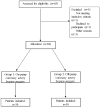The Effect of Coronary Artery Bypass Surgery on Interleukin-18 Concentration and Biomarkers Related to Vascular Endothelial Glycocalyx Degradation
- PMID: 40564918
- PMCID: PMC12193331
- DOI: 10.3390/ijms26125453
The Effect of Coronary Artery Bypass Surgery on Interleukin-18 Concentration and Biomarkers Related to Vascular Endothelial Glycocalyx Degradation
Abstract
Surgical myocardial revascularization, regardless of the technique used, causes ischemia-reperfusion injury (IRI) in the myocardium mediated by inflammation and degradation of the endothelial glycocalyx (EG). We investigated the difference between on-pump and off-pump techniques in terms of the concentration of proinflammatory interleukin (IL)-18 and the EG degradation products syndecan-1 and hyaluronic acid measured by ELISA in the peripheral and cardiac circulation during open heart surgery and in the early postoperative period. The concentration of IL-18, C-reactive protein (CRP), and cardiac troponin T (cTnT) and the leukocyte count increased statistically significantly in revascularized patients at 24 and 72 h after revascularization compared to the beginning of the procedure and was always statistically significantly higher in on-pump patients. Syndecan-1 and hyaluronic acid only increased in on-pump patients 24 and 72 h after revascularization. IL-18 correlated positively with syndecan-1 and CRP only in the pump setting and with the number of leukocytes in both revascularization regimens 24 and 72 h after the surgery. cTnT and hyaluronic acid did not correlate with IL-18. Our results suggest that IL-18 plays an important role in the early inflammatory response in patients during open heart surgery and in the early postoperative period, leading to additional damage to the EG, while it is probably not responsible for myocardial necrosis. It could serve as a biomarker to identify high-risk patients and as a therapeutic target to reduce inflammation and EG degradation. In addition, measurement of IL-18 could help improve the treatment, recovery, and outcomes of patients after heart surgery.
Keywords: cardiac surgery; endothelial glycocalyx; hyaluronic acid; inflammation; interleukin-18; syndecan-1.
Conflict of interest statement
The authors declare no conflicts of interest.
Figures






Similar articles
-
Remote ischaemic preconditioning for coronary artery bypass grafting (with or without valve surgery).Cochrane Database Syst Rev. 2017 May 5;5(5):CD011719. doi: 10.1002/14651858.CD011719.pub3. Cochrane Database Syst Rev. 2017. PMID: 28475274 Free PMC article.
-
Changes in syndecan-1 concentration in the coronary sinus immediately after cardiac reperfusion reflect postoperative myocardial injury.Int J Cardiol. 2025 Nov 1;438:133564. doi: 10.1016/j.ijcard.2025.133564. Epub 2025 Jun 29. Int J Cardiol. 2025. PMID: 40592406
-
Cardiac troponins and volatile anaesthetics in coronary artery bypass graft surgery: A systematic review, meta-analysis and trial sequential analysis.Eur J Anaesthesiol. 2016 Jun;33(6):396-407. doi: 10.1097/EJA.0000000000000397. Eur J Anaesthesiol. 2016. PMID: 26901389
-
Intravenous magnesium sulphate and sotalol for prevention of atrial fibrillation after coronary artery bypass surgery: a systematic review and economic evaluation.Health Technol Assess. 2008 Jun;12(28):iii-iv, ix-95. doi: 10.3310/hta12280. Health Technol Assess. 2008. PMID: 18547499
-
Plasma resuscitation restores glomerular hyaluronic acid and mitigates hemorrhage-induced glomerular dysfunction.J Trauma Acute Care Surg. 2025 Jul 1;99(1):59-67. doi: 10.1097/TA.0000000000004623. Epub 2025 Apr 10. J Trauma Acute Care Surg. 2025. PMID: 40205640
References
-
- Roth G.A., Mensah G.A., Johnson C.O., Addolorato G., Ammirati E., Baddour L.M., Barengo N.C., Beaton A.Z., Benjamin E.J., Benziger C.P., et al. Global Burden of Cardiovascular Diseases and Risk Factors, 1990–2019: Update from the GBD 2019 Study. J. Am. Coll. Cardiol. 2020;76:2982–3021. doi: 10.1016/j.jacc.2020.11.010. - DOI - PMC - PubMed
-
- Wenger N.K., Boden W.E., Carabello B.A., Carney R.M., Cerqueira M.D., Criqul M.H., Epstein A.E., Froelicher E.S., Gibbons G.H., Hlatky M.A., et al. Cardiovascular Disability: Updating the Social Security Listings. National Academies Press (US); Washington, DC, USA: 2010. [(accessed on 23 March 2025)]. Available online: https://www.ncbi.nlm.nih.gov/books/NBK209984/
MeSH terms
Substances
Grants and funding
LinkOut - more resources
Full Text Sources
Medical
Research Materials
Miscellaneous

